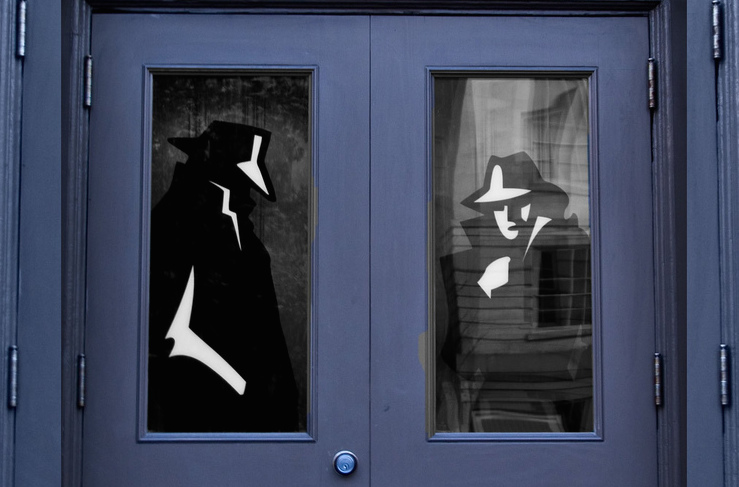Message, Nr.2, February, 2004
The U.S. press has failed in its coverage of Iraq. That much many media journalists agree on. However, there is no consensus on the reasons for this failure. Was the underlying cause journalistic norms or patriotic sentiment?
September 11th traumatized the Western world and all but paralyzed American journalism, putting it into a trance from which it appears to be waking only now, after the third Gulf war, though nevertheless still in time for the next presidential election. Be that as it may, American journalism is once again willing to take a critical look at itself, as is evident in America’s most distinguished journalism journals, the Columbia Journalism Review and the American Journalism Review (AJR).
In their reviews of U.S. coverage of Iraq, both journals reach the same conclusion: the media, in particular television networks, handled the Bush administration with kid gloves instead of asking crucial, tough questions. However, their analyses of why this was so differ considerably.
Both magazines first recount a particularly embarrassing incident which illustrates the core issue: in early March last year, 94 reporters gathered in the White House. President Bush was giving a prime-time, solo press conference during which he made further remarks about his war on terror, asserted that Saddam Hussein was in possession of weapons of mass destruction and that these weapons posed an immediate threat to the United States. At this press conference, Bush mentioned Al Qaeda and the terrorist attacks of September 11th 13 times in 52 minutes, as the Columbia Journalism Review counted. Yet not a single journalist challenged the presumed connection between Iraq and the terrorist network, notes the journal. This, despite the fact that even the CIA had expressed doubts about the existence of such a connection. The journal also criticizes the fact that while dozens of articles and broadcasts developed post-war scenarios months before the war began, only very few of these stories addressed the numerous and plausible complications of the aftermath, from which America would only be able to extricate itself with difficulty, once military operations were officially over. That did not change, the journal points out, until the president put this issue on the agenda himself.
The American Journalism Review emphasized that while there were 30 questions asked at the press conference, not one concerned domestic issues, such as the mounting budget deficit, rising oil prices, rapidly surging unemployment, or the dramatic increase in the price of prescription drugs. The journal notes that if a loser emerged at that evening’s assembly, it was the White House press corps. The pack of journalists appeared to have been “totally domesticated”, as one observed.
Though complementary rather than contradictory, the analyses of the two journals offer very different explanations for why the media had behaved like the administration’s lap dog instead of living up to its name as society’s watchdog.
For Brent Cunningham, Columbia Journalism Review’s managing editor, it is the principle of objectivity that is American journalism’s Achilles heel. This principle, he contends, does not only hold journalists to non-partisan and fair reporting standards, it also leads to laziness. Instead of researching news material in depth to gain a solid understanding of the facts at hand, journalists obsessively pursue “the latest” and, when in doubt, include an unconfirmed statement in opposition to another for the sake of balance. Due to the strictures of objectivity, he continues, journalists rely too much on official sources, because it is the easiest and quickest way to get both a “she said” and a “he said” statement and thus arrive at a balanced report.
According to figures from media analyst Andrew Tyndall, of the 414 stories broadcast on NBC, ABC and CBS from September 2002 until February 2003, before the start of the war, almost all could be traced back to sources from the White House, the Pentagon or the State Department. Only 34 stories – a meagre 8 percent – were of a different origin.
Having already turned the world of objective journalism upside down at the beginning of the twentieth century, public relations “has matured into a spin monster so ubiquitous that nearly every word a reporter hears from an official source has been shaped and polished to proper effect”, says Cunningham. Quoting Joan Didion, Cunningham argues that under such conditions, the ideal of fairness considered sacred by newsrooms “has come to mean scrupulous passivity, a [tacit] agreement to cover the story not as it occurs, but as it is presented, which is to say as it is manufactured”.
Another shortcoming in the professional norm of objectivity which Cunningham identifies concerns the choices to be made when placing a story in a larger context. “When, for example, is it relevant to point out, in a story about Iraq’s weapons of mass destruction, that the U.S. may have helped Saddam Hussein build those weapons in the 1980s? Every time? Never?” The rules of objectivity, he says, do not help answer these questions.
Although he makes a strong case with his frontal attack on objectivity, Cunningham nevertheless fails to offer a viable alternative. His carefully documented analysis deftly summarizes an issue in mass communication which has been the subject of debate for decades. However, the question of what should take the place of objectivity remains unsolved. Perhaps the answer is at the beginning of Cunningham’s article in a passage which bears a striking resemblance to the famous Churchill quote on democracy: “Objectivity has persisted for some valid reasons, the most important being that nothing better has been found to replace it.”
The American Journalism Review follows a more conventional line of reasoning by demonstrating how all of America was swept up in a wave of patriotism following the terrorist attacks of September 11th and how the government, riding this wave, was able to benefit from the opposition party’s simultaneous weakness. According to this report, these circumstances were further compounded by the existing predominance of right-wing radio and cable talk shows, which had already been rallying against the media for its alleged liberal bias for years, resulting in an intimidating environment. “American journalism, especially television, has essentially been foxified,” says Frank Sesno, former Washington bureau chief, describing the rising influence of the right-wing Fox News Channel belonging to Rupert Murdoch.
But other factors which come into play are mentioned as well. Mike Halperin, ABC News’ political director, says that the White House press corps’ prestige began to dwindle after the Cold War, and the journalists employed there today are less experienced and less skilled than they used to be. He adds that the president and his staff know how little the public trusts the press and so the administration can “ignore and steamroller” them.
Nevertheless, the verdict is not unanimous. The non-partisan Council for Excellence in Government, for instance, examined the first year of three presidential administrations: Ronald Reagan’s, Bill Clinton’s and George W. Bush’s, and concluded that coverage was predominantly negative for all three. S. Robert Lichter, president of the Center for Media and Public Affairs which analyzed the news content, reached the conclusion that the media are tough on all presidents.
However, as Rachel Smolkin, author of the AJR report, rightfully observes, one must distinguish between appropriate scepticism and unjust negativity. Clinton, she reasons, also fell victim to a kind of keyhole journalism, which in his case focused on the faux pas in his personal life rather than his politics. The affairs of Bush’s predecessor provided the media, always hungry for clear-cut stories, with tasty morsel after another. “The Clinton scandals, such as they were, were kind of embraceable: did he or did he not cheat on his wife, did he or did he not cheat on his real-estate deals, did he or did he not molest Paula Jones?” says a former presidential aide and current contributor to Fox News Channel. Covering a topic as complex as the war on terror, by contrast, is far less rewarding and far more challenging, says Smolkin.
According to the AJR report quoting former CNN Vice President Sesno, the media also failed in that “there was not enough discussion as to why the French, Germans, Chinese, Japanese and Turks” felt so differently about the war, meaning “there was not enough healthy scepticism as to why the administration’s case was not strong.” And New Republic editor Peter Beinart adds that “certain claims and statements were repeated so often that they were just taken as fact”, and that instead of cautiously suggesting Iraq might be working on a weapons program, the media were quick to assert that Iraq “has” or “possesses” certain weapons.
Further reading:
– Brent Cunningham, Rethinking Objectivity, Columbia Journalism Review, July/August 2003
– Rachel Smolkin, Are The News Media Soft on Bush?, American Journalism Review, October/November 2003
(Translation: Fabia Zöllner)











































